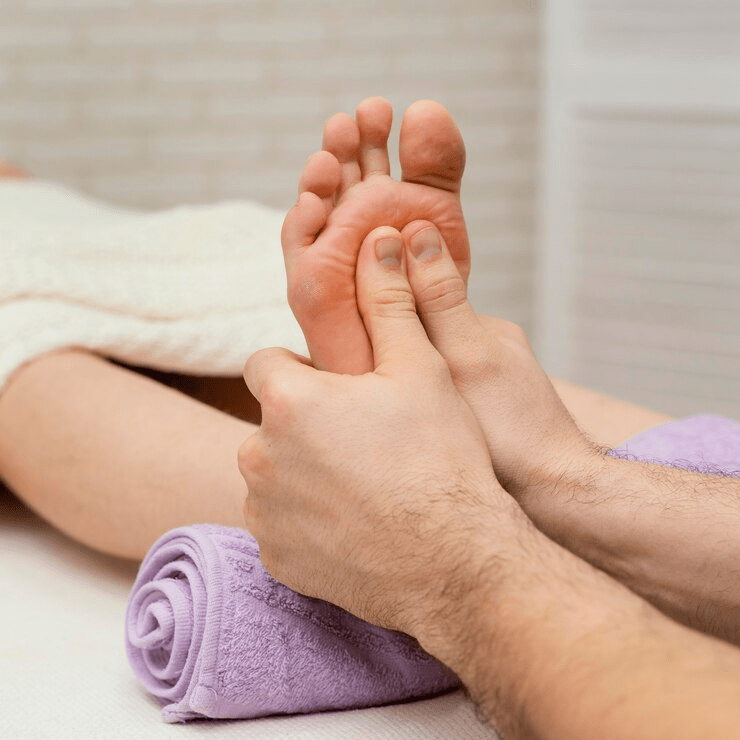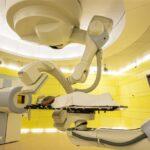Reflexology is an ancient form of massage that promotes natural healing, emotional balance, circulation, and relaxation. It focuses on energy pathways found within our bodies by applying pressure to certain areas of the feet and hands. Several studies support its efficacy in treating various health issues. In this blog post, we will discuss how reflexology works to help deepen your understanding of this therapeutic method.
What is Reflexology and How Does It Work
Reflexology is an ancient practice that can be traced back to 2300 BCE in Egypt. It is a therapy that involves applying pressure to specific points on the feet, hands, and ears. These points correspond to different organs and systems in the body, and by applying pressure, reflexologists aim to stimulate a healing response in the body. But reflexology is more than just a relaxing foot massage. It’s an effective complementary therapy that can relieve stress, reduce pain, and improve overall well-being. For those interested in taking their reflexology skills to the next level, advanced reflexology courses can provide a deeper understanding of the practice and its applications.
Identifying Pressure Points in the Feet to Heal the Body
The human feet are amazing structures that support us throughout our lives, and they often get neglected despite their vital importance. Little do people know that there are specific pressure points in the feet that are linked to different organs and areas of the body. By applying targeted pressure on these points, one can alleviate pain, stimulate blood flow, and promote overall healing. This ancient practice is called foot reflexology, and it is gaining popularity as people pursue holistic approaches to healthcare. Whether you are suffering from headaches, digestive issues, or stress-related ailments, identifying the pressure points in your feet can be a game-changer in restoring balance to your body and mind. So why not give your neglected feet some love and discover their healing potential?
Benefits of Reflexology – Improved Circulation, Relaxation and Stress Reduction
Reflexology is a therapeutic practice that involves applying pressure to specific points on the feet, hands, and ears. This pressure, when applied correctly, triggers a response in corresponding organs and systems in the body. One of the greatest benefits of this practice is improved circulation. By stimulating the nerves and increasing blood flow, reflexology can help deliver oxygen and nutrients to every part of the body. Additionally, reflexology can promote relaxation and reduce stress levels. This is due to the release of endorphins and the easing of tension throughout the body. If you’re looking for a natural way to improve your health and well-being, reflexology may be worth considering.

Tips for Getting Started with Reflexology
Reflexology, an alternative therapy that takes a holistic approach to healing, has been gaining popularity in recent years. It involves the application of pressure to certain points on the feet, hands, or ears, which are believed to correspond with different organs or systems in the body. If you’re interested in trying reflexology, there are a few tips to keep in mind. First, find a qualified and experienced reflexologist who can guide you through the process. It’s also important to hydrate before and after a session, as reflexology can help stimulate the body’s natural detoxification process. Lastly, keep an open mind and embrace the relaxation and healing that can come with this unique and gentle approach to wellness.
Preparing for a Reflexology Session – Things to Know Before You Go
If you’re considering trying out reflexology, there are a few things you should know before your first session. First off, make sure you’re comfortable with the practitioner you choose – knowing you’re in good hands will make the experience more enjoyable. Next, it’s important to know that reflexology involves applying pressure to specific points on your feet, hands, or ears. Some people find it uncomfortable or even painful, so it’s important to communicate with your practitioner throughout the session to ensure that you’re not experiencing any unnecessary discomfort. Finally, keep in mind that reflexology is not a substitute for medical treatment, and you should always consult with a healthcare professional for any serious or chronic conditions. But if you’re looking for a relaxing and potentially therapeutic experience, reflexology may be just what you need.
Conclusion
To sum up, reflexology is a great way to help people take control of their overall health and well-being. Utilizing pressure points in the feet works as an effective form of healing for the body and offers numerous health benefits. If you are looking to get started with reflexology, ensure you have knowledge about identifying pressure points, the benefits of reflexology, tips on how to get started and what to expect in a session. It is important to also do research beforehand to find a qualified practitioner who adheres to ethical guidelines. Whether you are looking for relaxation or stress relief, reflexology can be a helpful tool that provides a variety of health benefits – so why not give it a try?



